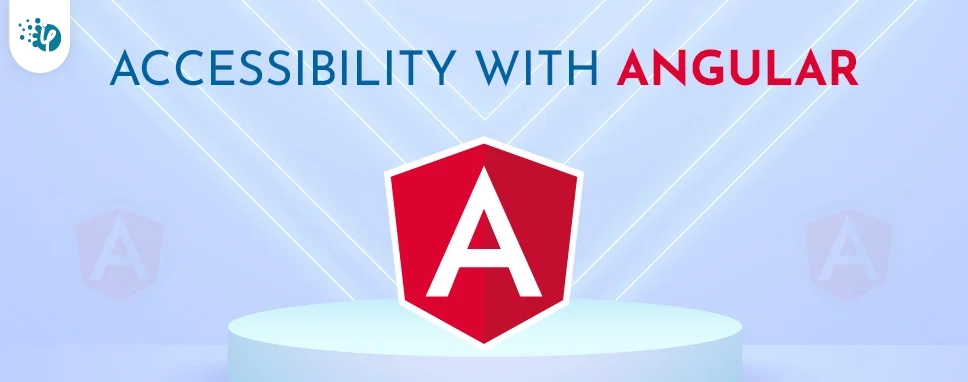17 Power BI Myths and Misconceptions Busted | Uncover the Truth
Did you know that 70% of CTOs (Chief Technology Officers) hesitate to adopt Microsoft Power BI because of its myths and misconceptions that float around. What they fail to see is...
Kapil Panchal - April 27, 2021
Listening is fun too.
Straighten your back and cherish with coffee - PLAY !

A wide range of individuals, including those with visual or motor impairments, use the computer. A variety of assistive devices are available to make communicating with web-based software applications much simpler for these communities. Furthermore, making an application more accessible increases the overall user experience for all apps.
When we say a site is accessible, we mean that its information is available and that its services can be used by anyone. It's simple for developers to assume that all users can see and use a keyboard, mouse, or touch screen in the same way they can communicate with our page content. This may result in an experience that is satisfying for some but unsatisfying for others.
The experience of users who are beyond the narrow range of the "typical" user, who can access or communicate with items differently than we expect, is referred to as accessibility. It specifically affects users who are having a physical or mental impairment or disability — and keep in mind that the impairment or disability can be non-physical or temporary.
While we prefer to focus our usability discussions on users with physical disabilities, we can all relate to the frustration of trying to use an app that is inaccessible for other purposes. Have you ever tried to access a desktop site from a mobile phone and received the message "This content is not accessible in your region," or been unable to locate a familiar menu on a tablet?
If we gain more knowledge, we'll notice that resolving usability problems in this wider, more general context almost always enhances the overall user experience.
To make our Angular app more accessible, consider the following:Setting ARIA attributes to provide the semantic context where it may otherwise be missing is a common part of creating open web experiences. To manage the values of accessibility-related attributes, use the attribute binding template syntax.
Since the ARIA specification relies on HTML attributes rather than DOM entity properties, we have to use the attr prefix when binding to ARIA attributes in Angular.
The Angular Material library is a set of reusable UI components that needs to be fully accessible. It is maintained by the Angular team. The a11y package in the Component Development Kit (CDK) offers tools to support different aspects of accessibility.
Consider the following scenario:
Native HTML elements capture a variety of common interaction patterns that are critical for accessibility. Instead of re-implementing well-supported behaviors, you can re-use these native elements directly while authoring Angular components.
Instead of creating a new custom element for a new button type, you might build a component that uses an attribute selector.
Using the required native element often generally requires the use of a container element. Since the native element, for example, cannot have children, any custom text entry components must wrap it in additional elements. Although you could only include in the template of your custom component, this prevents users from assigning arbitrary properties and attributes to the input element.
The following example demonstrates how to make a simple progress bar available by controlling accessibility-related attributes using host binding.
With both the standard HTML attribute function and ARIA attributes, the component defines an accessibility-enabled feature. The user's feedback is now bound to the ARIA attribute aria-value.
The aria-label attribute in the template specifies that the control is available to screen readers.
router.events.pipe(filter(e => e instanceof NavigationEnd)).subscribe(() => {
const mainHeader = document.querySelector('#main-content-header')
if (mainHeader) {
mainHeader.focus();
}
});
In a real app, the feature that gets the most attention is determined by the structure and layout of your app. Users should be able to step right into the key content that has just been routed into view thanks to the centered feature. After a route shift, avoid situations where the emphasis returns to the body part.
In this blog we have discuss that, all web applications must be available, and it should be considered from the start of the project development lifecycle. The Angular team has provided tools to make creating Open Components simpler, and now it's open to developers to take advantage of them and build accessible Angular applications.

Did you know that 70% of CTOs (Chief Technology Officers) hesitate to adopt Microsoft Power BI because of its myths and misconceptions that float around. What they fail to see is...

Every CTO knows the struggle of managing complex reports. The inefficiency of scattered data, the constant juggling between reporting tools, the challenge of ensuring accurate KPIs...

The very first reason why you should implement Row Level Security is to foster trust, a crucial element for any business's success. Next, it reduces data clutter and helps you load...